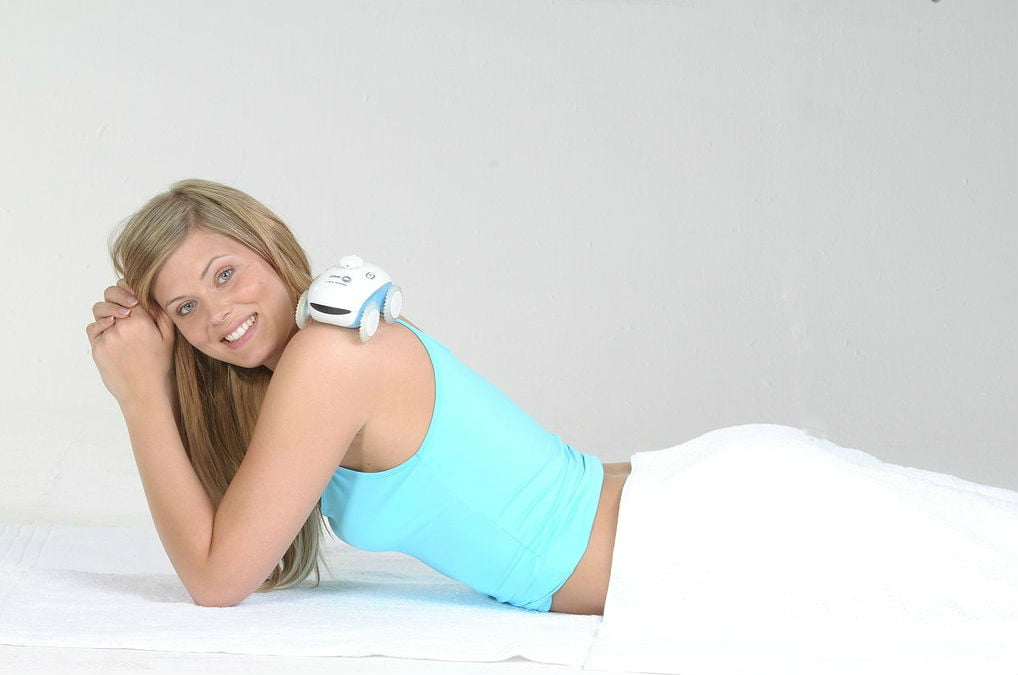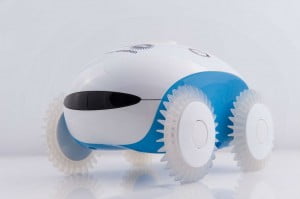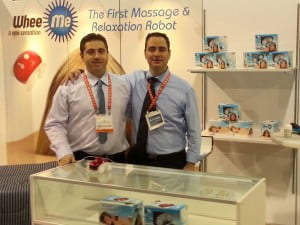A massage is a thing for two. Not only is another person’s touch more satisfying than our own, if we attempted to properly massage ourselves we’d most likely get injured. Massage robots, to an extent, can help us relax, loosen back-knots or bring the thrill of another’s caress to lonely souls, but so far they haven’t extended beyond cumbersome vibrating handheld devices.
That’s where DreamBots, an Israeli company with operators in China and the US, steps in with their debut gadget: WheeMe, a completely autonomous massaging bot.
Related articles
- PrimeSense Wants To Put Tiny Affordable Motion Sensors In Everything
- BGU Researchers To Put Brains In Rescue Robots
WheeMe, a robo-biography
DreamBot’s co-founder, CobiGurievsky, defines himself as a “businessman and robotics person.” His fascination with massage-bots started over sixteen years ago, when, as an adolescent, he created his first massage robot with friend and current CEO of DreamBot, Eyal Avramovich. This WheeMe predecessor was a bulky bridge-like contraption that traveled over your back.
Almost two decades on, this cumbersome thingamajig shrunk to become a smaller, cuter gizmo. About six years ago, Cobi and Eyal finally designed it professionally in a studio, hired engineers and WheeMe was born. The first round of funds came “from family, friends and our own savings,” until, in the second round, they had an angel investor and an undisclosed investment group, which gave Dreambots the boost it needed.
As you lie down and place the WheeMe on your back, it drives around thanks to what Gurievsky calls its “nylon finguerettes”, dented wheels not dissimilar to those of an all-terrain vehicle, the texture of which, in combination with the vibration of the motor and the robot’s weight (330 grams without batteries), creates the pleasing massaging sensation.
Sensors to prevent the WheeMe from falling
The WheeMe’s movement obeys to a special algorithm which, combined with its tilt sensors, prevents it from falling. When it senses an inclination in the surface, it turns into another direction, to avoid plummeting off your back. The travelling speed is of five centimeters/second. According toGurievsky, “those five seconds allow the body to create different feel-good hormones” in the massaged surface.
Unfortunately, what the bot gains by this algorithm makes it lose therapeutic value. A professional masseuse’s hands will follow a planned and often personalized route and press only specific points to liberate tensions. Dreambot’s conception of a massage, as technabob.com defines it, is to have something touching and roaming over your body.
But despite the gadget’s peculiar use, Gurievsky sees the current panorama devoid of competition, although it is undeniable that a myriad of massaging robots exist (let’s not forget massage chairs) and, upon research, we even found very similar models to the WheeMe created in years past, like a flat autonomous massage bot called Tickle (prototype #1 1998), which never made it to global market.
Therefore, as pioneers in the market, WheeMe are currently working on future innovations for their gadget to secure their position, such as “interchangeable wheels or water attachment” to increase the pleasure by toggling with the robot’s weight. The co-founder estimates that “within one or two years” they will have “direct competition from the Far East.”
Sign up for our free weekly newsletter
SubscribeGiving up to a robot’s caress
Although Gurievsky acknowledges that “human touch is a special touch” and that a bot will never equal it, he finds the WheeMe’s advantages innumerable: it’s good for relaxing after a stressful day, many of us don’t have time or money to spare to pay for a professional massage, so we can simply use the WheeMe at home, and, if you are asked to give a massage, your hands don’t have to get tired after a long session.
While it may seem more suitable for singles, Gurievsky claims that “couples love it too.” That’s why he can calmly label his target market as “everyone”. WheeMe distributors witness how “at every giftshop that it’s sold you’ll find children, senior citizens, women and men of all ages buying it, either for themselves or as gifts.”
The primary market is people between the ages of 25 and 35, however, a group the co-founder defines as “early adopters who love gadgets.” To purchase a WheeMe, you must access the specific site which distributes to your country (Dreambots’ official site offers a directory). It costs between $70 and $90, a price which, to Gurievski, seems justified as he says robotics are expensive to manufacture. Nevertheless, Dreambots claims to receive daily emails from users who praise WheeMe’s pleasure-giving quality and Dreambots even uploaded Youtube clips of “people fooling around with their WheeMes.” (We’re not sure if there is a pun intended..)
Rolling round the world
But the Sun hasn’t shone all the way. Whereas the R&D is developed in Israel, distribution is from China to the rest of the world, which, Gurievsky admits, “in the beginning led to shipping problems and delays,” as comments of some sites seem to testify. Gurievsky reports that, otherwise, it is selling very well, especially in Eastern Europe.
WheeMe is available in the entire European Union, India, Russia and Israel. It will also be available soon in South Korea and Japan. Although currently available in a few North American States, Dreambot has only recently started to tackle the US market more aggressively after their official launch at the International CES in Las Vegas.
Their booth at the fair, reported on by news organizations such as CNN, Fox, MSNBC and even Israel’s Channel 10, had two beds which tired visitors could lay on to have a WheeMe ramble over them.
Official launch in the US market will begin in June or July through major retailers such as Amazon.com.
Related posts

Editors’ & Readers’ Choice: 10 Favorite NoCamels Articles

Forward Facing: What Does The Future Hold For Israeli High-Tech?

Impact Innovation: Israeli Startups That Could Shape Our Future






Facebook comments